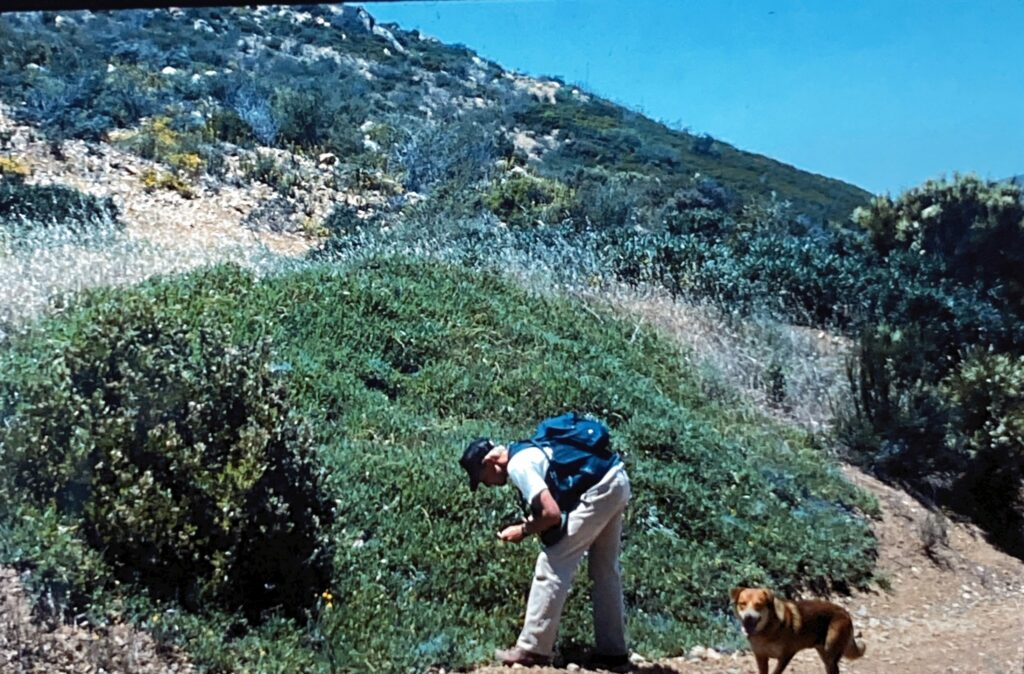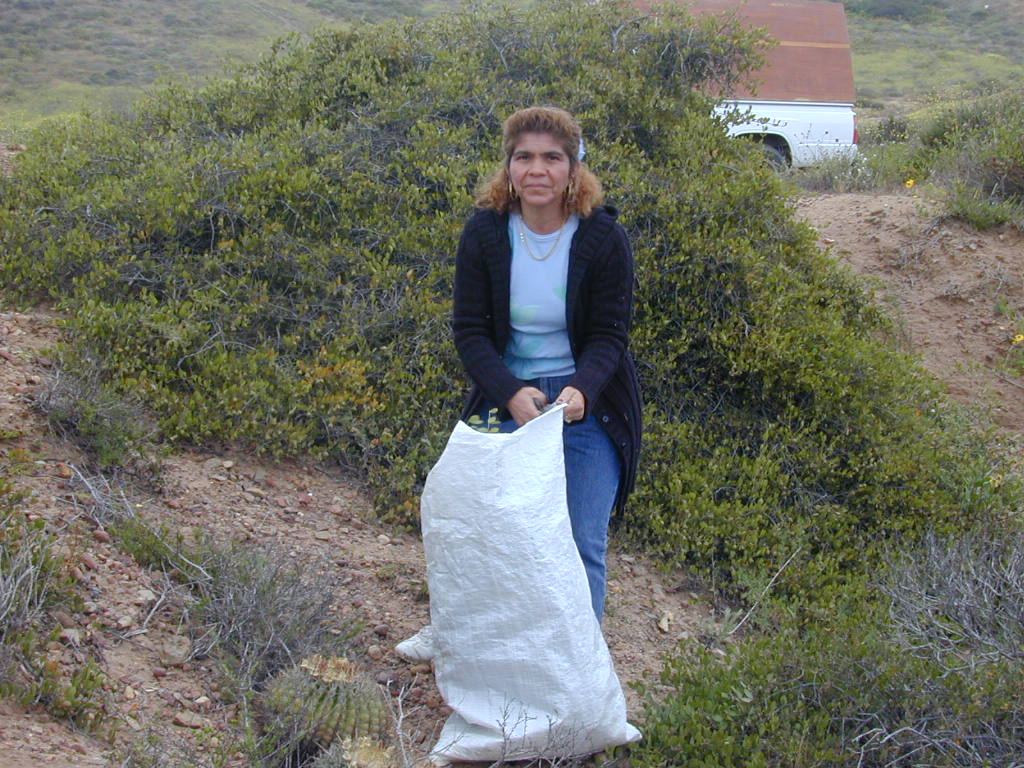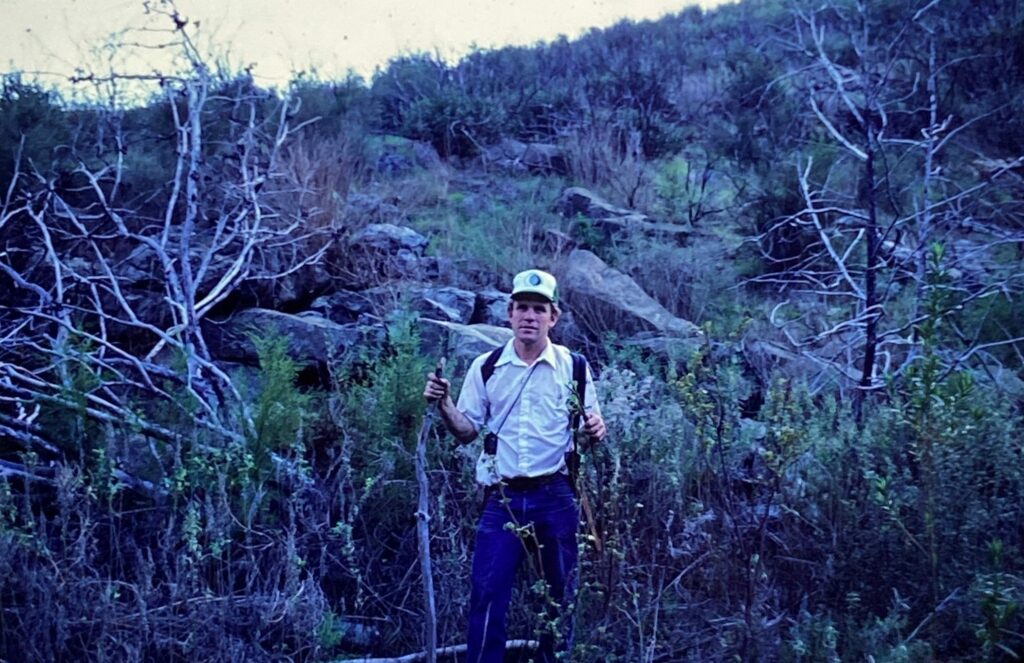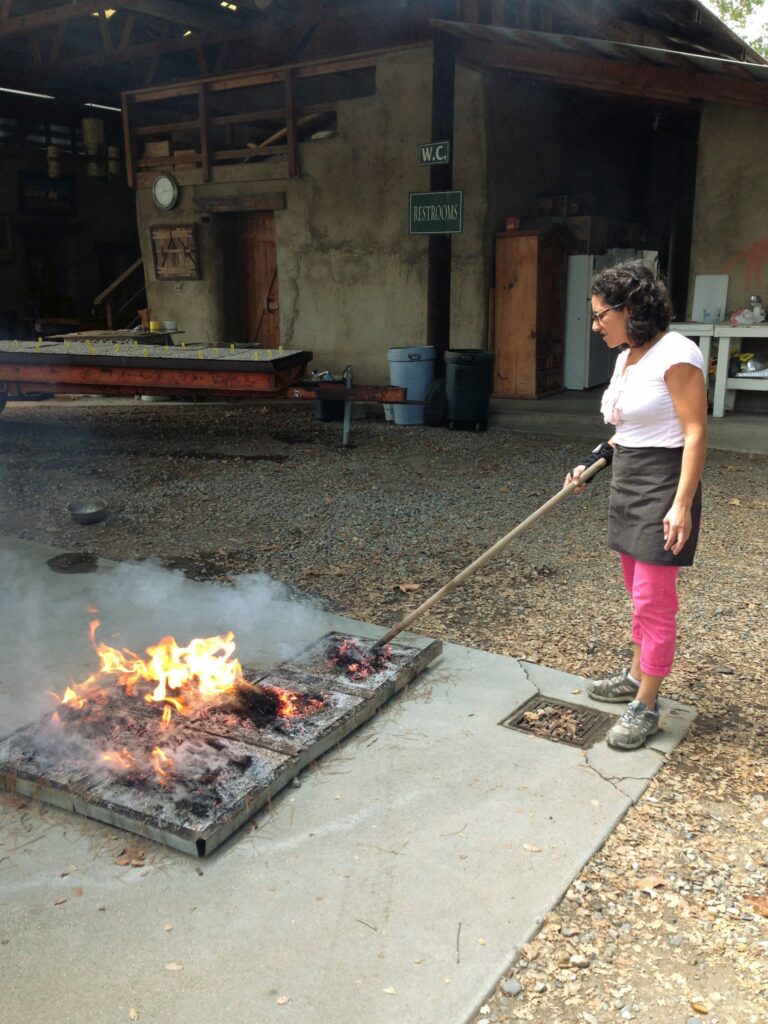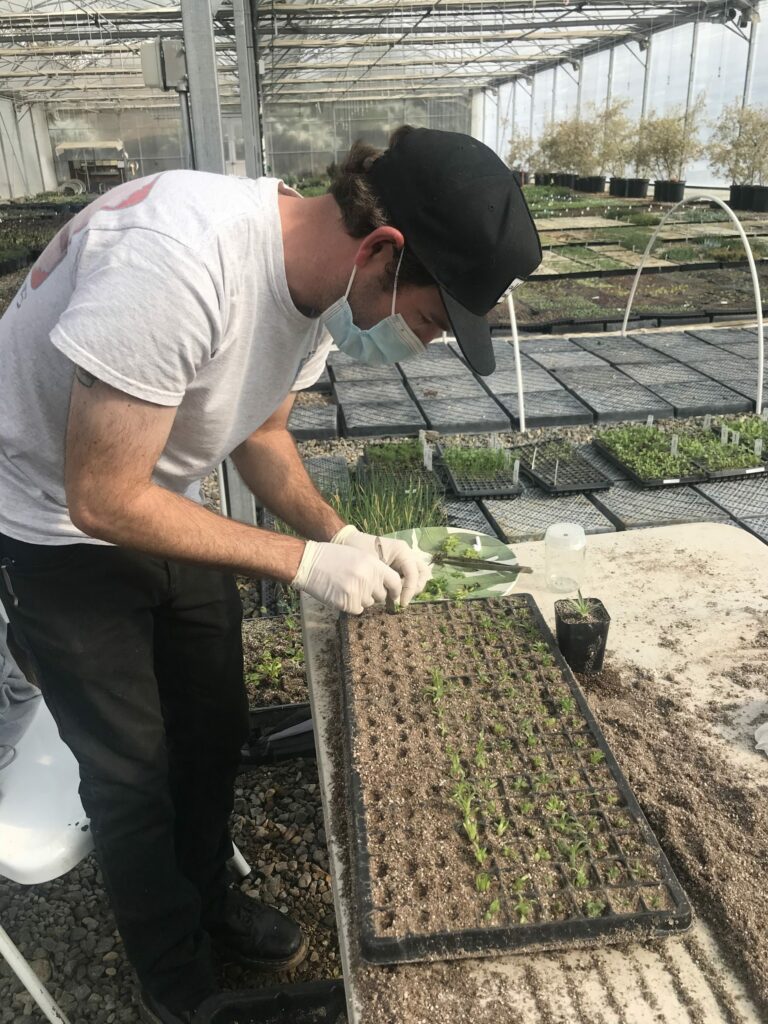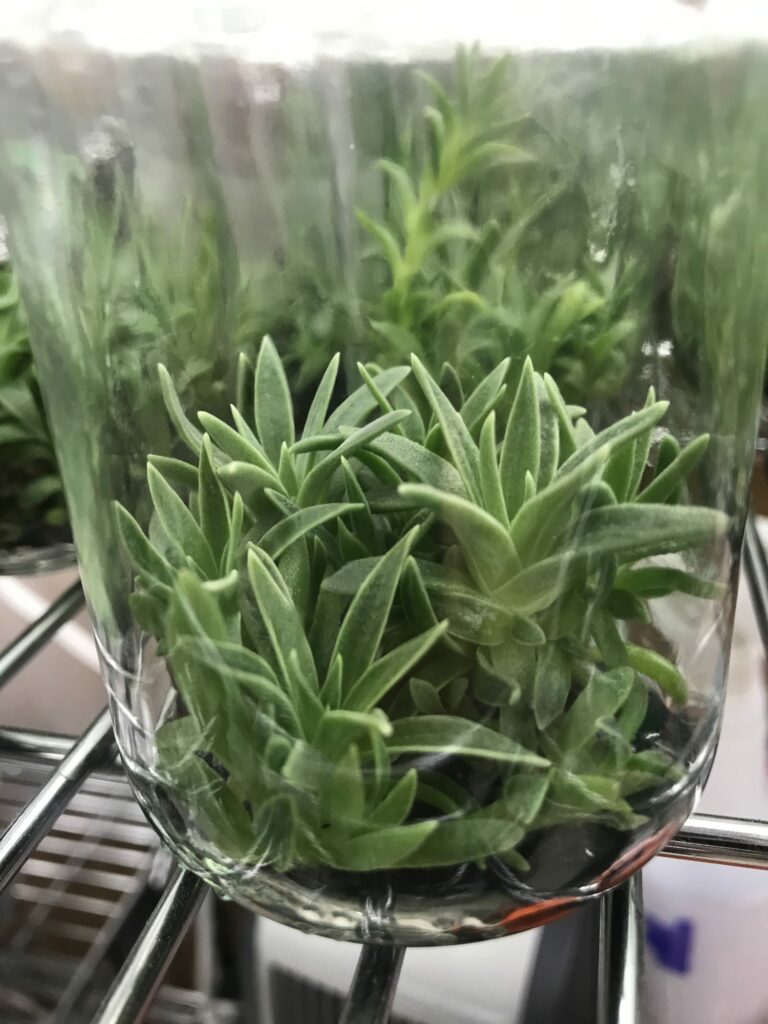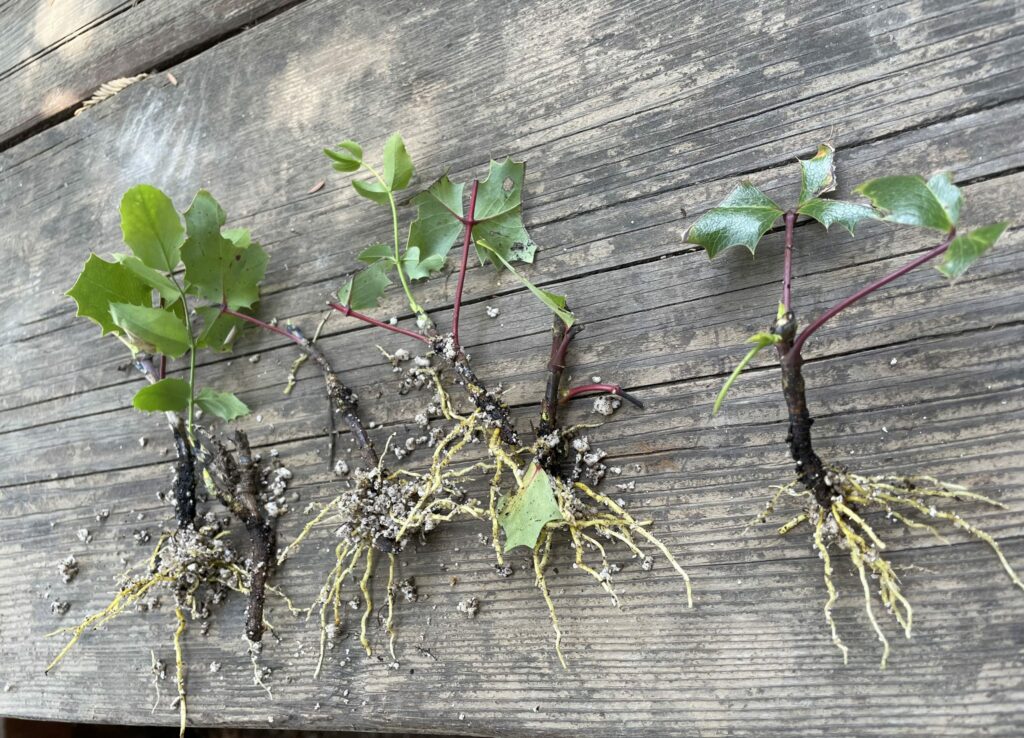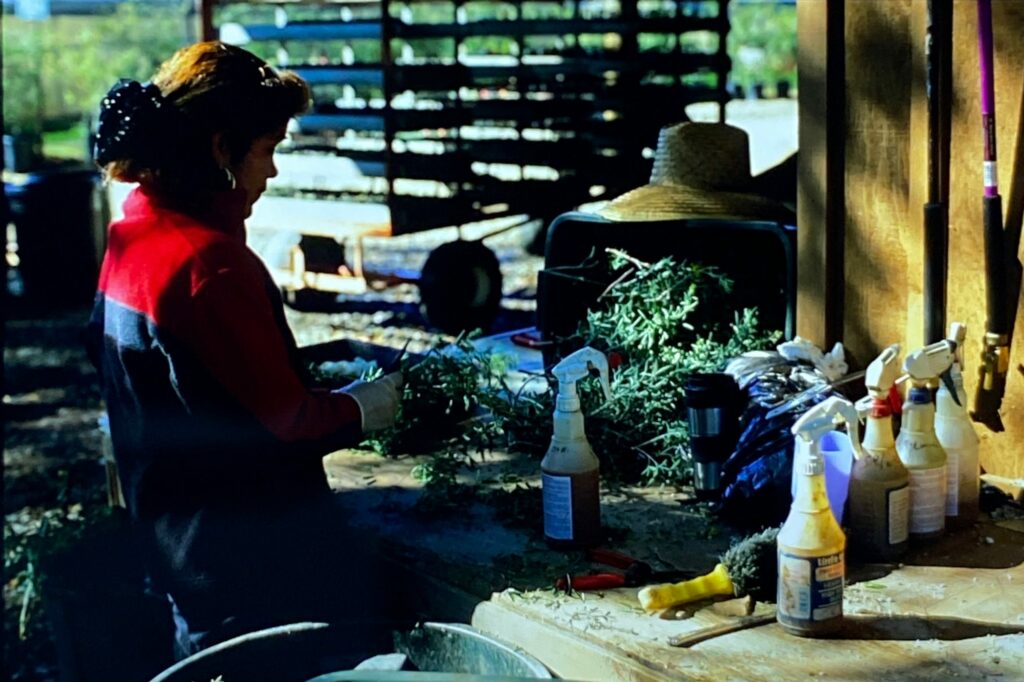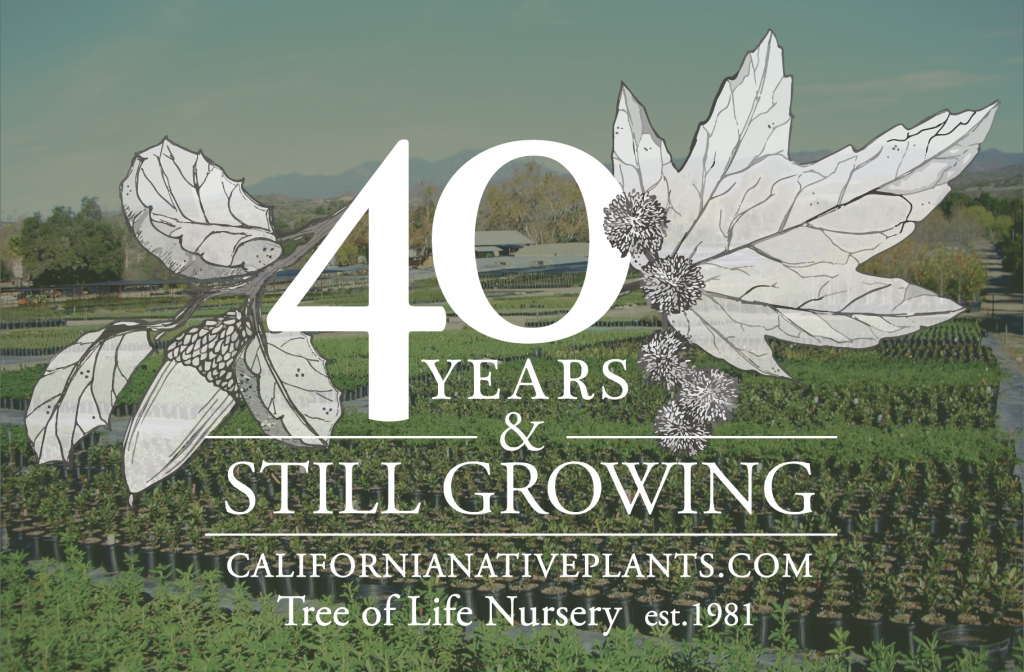
The story of Tree of Life Nursery is really a story of people and passion. And plants. California native plants and the land we occupy for growing, plus our team of friends and colleagues, including our loyal customers. 2021 marks the official 40-year anniversary of the partnership between the owners Jeff Bohn and Mike Evans. Mike founded the original company under the name Tree of Life Nursery and Landscape in 1977. Through a mutual friend and native plant expert, Mr. Art Tyree, (who learned from Mr. Theodore Payne himself) Jeff and Mike met in 1979 and discovered they had a lot in common; beach culture, surfing, the outdoor life, functional landscapes, sustainable gardens, landscape design, nursery experience, and a love for California native plants. Their story of building a nursery, a business, and a lifestyle will be told in a series of monthly essays to be published through 2021.
Essay #3, May 2021 – Propagating With Passion
People in the middle ages were busy with many things, for instance trying to make their own gold out of ordinary base metals. Good luck with that. In medieval times it became known as Alchemy, a practice where craft and science mixed with magic and enchantment, attempting the impossible. It didn’t work out for them.
Sometimes it feels as if propagating and growing natives in a nursery requires a similar blend of science and craft, art and luck, plus a little magic, if you believe in magic. Some plants are easy, others quite difficult, and others plain impossible… until you try one more time and find all the seeds germinating or all the cuttings taking root. Then when you try again you get mixed results. It’s what makes this job interesting.
In the late 70’s we were inspired and led by some pretty big horticultural heroes who will be the topic of a future essay. They left a legacy of propagation notes, books, records, and garden plants as a foundation for learning. But as we built from there, it was mostly by trial and error. Add in persistence, experimentation, and a readiness to exchange ideas and techniques with fellow plant alchemists, and you’ll be called a propagator.
You can’t pull plants out of thin air. That would be pure magic. You need propagation material, and each plant is to be started in its own way. Seed, cutting, division, root cutting, and cell differentiation with multiplication (tissue culture) are all ways to make new plants. We have not had to practice grafting or budding in our production of native plants. We have whole shelves in our library dedicated to books on plant propagation. It is a keen art, practiced over millennia by curious, tenacious people.
Seeds often come from the back country or the edges of country lanes winding through various native plant habitats. Excursions to collect seed or cuttings from “the wild” have always been fun, and in our early years we would basically close the nursery for a day and head for the hills, like a surf shop closing down when the waves are good. Seed is mostly available in summer and fall, so the long days allowed for long hours in the field. Sometimes camping overnight was in order.
Cuttings are obtained from “mother plants,” cultivated or wild, and are usually taken from soft new branches, though some plants can be started from dormant hardwood or semi-hardwood cuttings. All cultivars, or named varieties, are grown from cuttings taken from plants growing in a horticultural setting. Some wild species can be grown from cuttings, but in most cases, seed propagation is preferable. If we make a field trip to obtain cuttings, the time period is most often fall through spring, and we need to haul coolers to keep the cuttings from drying out in transit.
Excursions to wild places, botanical gardens, nurseries, and research facilities, for the purpose of obtaining seeds, cuttings, plants, or information became hallmark events for us. I have dozens of USGS 7.5 minute quadrangle maps containing 40 years of copious pencil notes regarding plants, seeds, and cuttings. I carry paper and plastic bags of every size in every vehicle and every backpack I have ever owned, and seeds and cuttings tend to always find their way in.
Individually, our propagators joined the International Plant Propagators Society (whose motto is “To Seek and to Share”) and we got a lot out of their annual conferences and field trips, occasionally presenting papers. Really, we dove in headfirst and for 40 years have been immersed in all things propagation; building better facilities, practicing better techniques, learning new things, keeping good records, trying new things.
Speaking of record keeping in propagation, we have to mention two key people who are carrying in their heads more information on how to start natives than perhaps anyone in the state. Gloria Castillo is a master in the world of cuttings, that is, vegetative propagation. Haydee Rodriguez sows seeds and we estimate she has handled over 300 native species. Between them they are responsible for several million native plants.
Both are famous for their zeal and ability to experiment. Gloria proudly brought me a few rooted cuttings of Mahonia ‘Golden Abundance’ to show me she figured out how to do something we hadn’t been able to do for over 35 years. (Cuttings didn’t work so we had been doing air-layering, also by her discovery 20+ years ago.) Haydee recently showed me several seed flats of three native milkweed species that were just lifting off. This in itself is not so remarkable, except that the sowing density was perfect and she has been sowing on perfect intervals, assuring that new seedlings will emerge in sequence over three growing seasons. Subtle things. Consistent supply. These are only two examples of what happens all the time when you mix science and craft, art and luck, plus a little magic, adding enthusiasm and learning.
Jeff Bohn heads up our propagation. In the early years, he was the hands on seed processor and seed sower, before training Haydee, and he initiated Gloria in the world of vegetative propagation. He and Kevin Alison oversee the department now, and Kevin is taking us into new realms with tissue culture, that is micropropagation of difficult to grow (sometimes rare or endangered) plants.
Jeff was the pioneer and his passion for propagation is evident in 40 years of consummate investigation. The persistence required to get the science right matches his personality, and he’s constantly tweaking soil mixes, proving new methods of plant protection by the judicious use of beneficial organisms and chemical tools, testing fertilizers, always striving to improve the timing and technique required to grow 400 varieties of native plants year after year. Other folks are involved, each in their own occupation, mixing media, carting flats and containers, watering and tending tiny new plants, transplanting, keeping records, moving crops around. A propagation nursery is a busy place.
Material has to come from somewhere. I still get out on a fairly regular basis, collecting those valuable roadside seeds and cuttings. Others tend container plants and garden specimens on our grounds that serve as on-hand mother plants where Gloria finds cuttings. Everyone is excited at the potential for bringing a new plant into our nursery, so when a staff member’s weekend trip includes a nursery or a natural area, new plants, cuttings or seeds find their way into our propagation department. But not everything we propagate makes it into our sales inventory. We play around with some exciting stuff, for our own edification and because we are passionate.
The facility is like the new-baby part of a hospital. Sanitary protocols, vigilant handling, accurate records, patience, nurture, hope. And then, after the seed is germinated or the cutting is rooted, the real fun begins. We transplant to individual pots and provide more intensive care. We place tiny plants in a greenhouse or shade house and the responsibility gets transferred to a new team. A lot can go wrong in very short order, as the plants are so new. This is where experience becomes part of the science, always with an eye on the weather and other environmental conditions, since momentary changes will affect the crop.
Every aspect depends on skilled hand labor as well. Before any plant would make it to a saleable condition in a larger pot it will have been handled several times. But the most intense period is when it’s in “Propagation,” and that’s where a lot of dedicated plant people keep a watchful eye on things. And it’s not easy. If it were, lots of nurseries would be doing it.
After 40 years of this, with an accurate database and mucho record keeping all along, we are keenly aware that the most valuable technology is still being carried in people’s heads. As we head into our next 40 years, we are developing methods to document and pass this knowledge on to the next generation of propagators.
We’re finding that to propagate plants you have to propagate passion as well. Much of the work is repetitive. It’s all done by hand. You need patience. You need intuition as well as hard facts. You can’t be discouraged by failure but you must be ecstatic with success. And you have to be willing to share your knowledge. It takes a unique personality, and even in this age of instant gratification and short attention spans, people that want to grow plants for a living are still out there.
It’s better than trying to make your own gold, first because it’s truly possible and second because it means a life of learning and a life with plants. I might go so far as to say that plant propagation is a calling. We are blessed here at Tree of Life to have people who daily answer the call and who apply their gifts and talents to grow natives from seeds and cuttings.
I believe that our world is a more beautiful place because of what they do. They and their colleagues all over the globe have chosen a godlike profession starting new plants in abundant numbers, for the utility and enjoyment of every creature.
